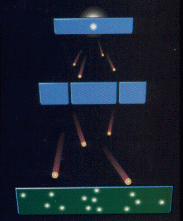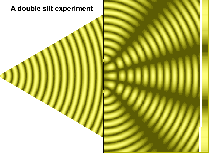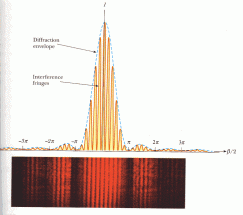Every important race starts with a first step. With some time, we hope to put you in the vanguard of condensed matter physics principally, but physics in general. But before we start running, we think it is better to start with a simple walk.
For the benefit of non-specialists and students, who might not have such an extensive knowledge of physics, we will start reviewing some basic, yet extremely important topics. The first question that might come to your mind could be: Why condensed matter physics? Why should I care? Well, look around you. Almost everything you see is governed, in its most fundamental principles, by the physics of materials. Starting from the patterns you see if oil is mixed with water, to the color of the sky, the melting of water, the functioning of resistors and ultimately your computer, to the existence of more exotic phenomena like superconductivity, superfluidity, exotic phases of matter, or the dreams of sophisticated technology advances like functional quantum computers. You name it! The physics of materials pervade our world and daily lives from head to toes. This is what condensed matter physics is all about. And since most of condensed matter physics is concerned with the quantum mechanics of many body systems, we will be discussing some aspects of quantum mechanics in general, and quantum field theory of materials.
Let us start our walk by taking some time to share a few thougts on quantum measurement. This is one of the most mysterious aspects of quantum mechanics. Quantum Measurement is important for abstract questions of how one goes from quantum to classical behavior in an intrinsically quantum world. It must be better understood and controlled as it is one of the important puzzles to be cracked if the promising and exciting dreams of quantum computation are to be realized.
Many physicists consider the problem of quantum measurement unsolved. We will certainly not solve it in this post, but with the simple and cliched example of the double slit experiment, we will present what we know about decoherence from interaction with a measurement apparatus and present the two main
interpretations of measurement: Copehagen (wave function collapse in this context) or Many worlds interpretations.
First, we plagiarize the textbooks presentation of the double slit experiment and start with a double slitted wall. Far to the left is a particle gun and far to the right is a screen where the particles become stuck and are collected. The gun shoots evenly in all directions.
A) The experiment with classical particles
- If the experiment is run with the upper slit open and the lower slit closed, the distribution of bullets at the screen is
.
- If the experiment is run with the lower slit open and the upper slit closed, the distribution of bullets at the screen is
.
- If the experiment is run with both slits open, the distribution of bullets at the screen is
.
B) The experiment with quantum particles
The two most important difference between quantum and classical mechanics are
- particles or aggregates of particles (that is, matter) behave like waves
- quantum mechanics is a statistical theory in the sense that projections of the square of the quantum system’s wave function
onto a state
,
, represents the probability of measuring the system in state
.
So while quantum evolution is perfectly deterministic, something not completely straightforward happens at “the moment of” measurement. Nonetheless, we can predict accurately the statistical behavior of the system, that is, the probability distribution of the outcomes.
- If the experiment is run with the upper slit open and the lower slit closed, the upper slit acts as a source of waves for the particle which has wavefunction
with space dependece
. This gives a distribution of particles at the screen
.
- If the experiment is run with the lower slit open and the upper slit closed, the lower slit acts as a source of waves for the particle which has wavefunction
with space dependece
. This gives a distribution of particles at the screen
.
- If the experiment is run with both slits open, both slits act as sources of waves for the particle which has wavefunction
with space dependece
. This gives a distribution of particles at the screen
.
Here we see one of the most important differences between quantum and classical mechanics: the wave aspect of matter. This aspect is illustrated by the the wave interference term , which is absent when the experiment is performed with classical particles.
If instead of shooting the particles all at once, they are shot one by one, and after a large number has accumulated at the screen one looks at the distribution, the results do not change. There is still interference. Each particle “interferes” with itself. Actually the wavefunction corresponding to each particle interferes with itself.
You can have a bit of fun with two nice applets found here:
http://www.colorado.edu/physics/2000/applets/twoslitsa.html
http://www.colorado.edu/physics/2000/applets/twoslitsb.html
C) The experiment with quantum particles and a measurment apparatus
We now place an apparatus at the upper slit that can determine if a particle went through that slit or not. The apparatus has a ticker which is at 0 and changes to 1 every time a particle goes through the upper slit. Hence, if the apparatus stays at 0, the particle went through the lower slit. If the apparatus switches to 1, the particle went through the upper slit. The apparatus goes back to 0 before the next particle goes through.
If the experiment is run with both slits open, the distribution of particles at the screen is . There is no interference term! That is the same result as the experiment with classical particles.
The act of measurement seems to have something to do with the emergence of classicality, in particular the loss of wave interference behavior.
Some very good and smart physicists adscribe the act of measurement and its consequences, like collapse or appereance of classicality, to consciousness or to the effect of a conscious observer. This result, that interference is lost if there is a measurement device or detector, is unchanged if no one looks at the detector. The experimenter could very well only look at the screen and never at the detector. Because of this, consciousness has nothing whatsoever to do with the act of measurement or its consequences.
The disappearence of interference upon measurement led to Feynman’s famous one line, incomplete summary of Copenhagen:
“The determination of an alternative taken by a system capable of taking more than one alternative, destroys the interference between alternatives.”
D) The experiment with quantum particles and a measurement apparatus treated quantum mechanically
We expect the world to be intrinsically quantum mechanical and the apperance of classicality to arise from the quantum mechanics itself. This is an unsolved problem and we will not solve it here, but we will show how some aspects of the appereance of classicality can be understood from the interaction of the system (or the particle) and the measurement apparatus, and basically how the system becomes entangled with the appartus (or, for that matter, with any external element).
Besides the wave function for the particle or the particles being shot to the screen behind the two slit barrier, we have the measurement apparatus. The apparatus’ wavefunction has two orthognal states
and
.
If the experiment is run with both slits open, both slits act as sources of waves for the particle. After the particle goes through the two slit barrier, but before the interaction with the upper slit particle detector, the particle plus apparatus wave function is . Since the particle detector detects particles that go through the upper slit, after interaction with the apparatus, the particle plus apparatus have wavefunction
. Including the space dependence this is
. The particle has become entangled with the measuring apparatus.
Now the distribution of particles on the screen is
.
This is so since and
. We get the same result as with classical particles! Entanglement with a measurement apparatus kills the interference terms, coherence is lost and classicality arises. As long as the alternatives can be differentiated, classicality arises.
What happens if the measurement is not perfect? What if the apparatus detects at the upper slit with amplitude and fails to detect with amplitude
? After interaction of the particle with the apparatus, the wavefunction is
. Now the distribution of particles at the screen is
X
We see that there is an interference term, but it is proportional to the probability that the measurement was not made (). Hence the interference term is suppressed. In this sense we see that as far a measurement is made, decoherence occurs and we get closer to the classical result.
Now, the apparatus need not be an apparatus. We only need an external element that interacts with the particle because then, the external element will become entangled with the particle. For example, the particle can interact with the molecules of the atmosphere. There are of these molecules (with
exceedingly large). The distribution of particles is then
. Since
is less than one, when raised to a very high power it gives a neglibly small number. The particle behaves classically.
We have seen how the classicality emerges from a particle becoming entangled with many external events. We have not obtained all of the classical behavior since we still have a superposition of going through the upper slit and going through the lower slit. Nonetheless, we would only see one of the alternatives if the experiment is done only once. This is “solved” in an ad hoc matter in standard treatments of quantum mechanics usually by collapsing the wavefunction or invoking many worlds and postulating that we only “feel” one of the alternatives. How to attack this in a more satisfactory manner is still beyond us… May be one of you can figure it out. This is fuel for your thought.
Yours,
Dr. Damian Rudelberg




Wow! Thanks so much for this website. It’s just what some of us humanists and theorists need. Janet Leslie Blumberg (www.deepgraceof theory.com).
thanks for the help! (:
[…] de Quantum Matters (un grupo de físicos bajo el pseudónimo de Damian Rudelberg), “On Quantum Measurement,” os puede aclarar algunas ideas, aunque está dirigido a físicos (y […]